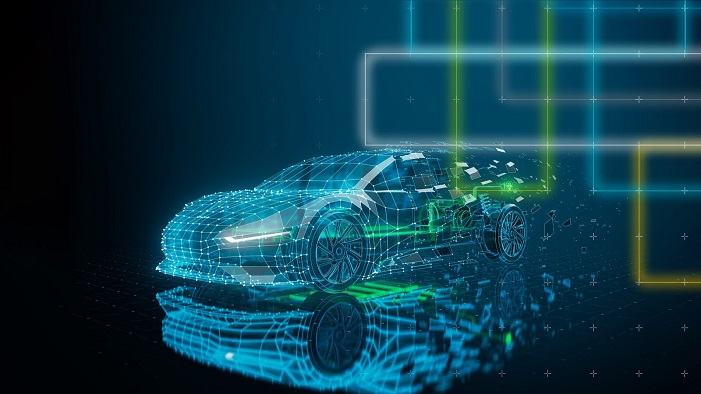The automotive world is undergoing a remarkable transformation driven by rapid advancements in car technology. From electric powertrains to self-driving capabilities, these innovations are redefining what vehicles can do and how we interact with them. Today’s cars are smarter, safer, and more efficient than ever before, signaling a future where mobility is seamless and sustainable. As technology evolves, it’s essential to understand the trends shaping this dynamic industry and their impact on drivers, manufacturers, and the environment.
In recent years, new technologies have pushed the boundaries of traditional vehicles, integrating cutting-edge features such as autonomous driving systems, connected car networks, and augmented reality dashboards. These breakthroughs kaku press only improve driving safety and convenience but also contribute significantly to reducing environmental footprints. This article explores the most influential trends in car technology that are transforming the automotive landscape and setting the stage for the future of transportation.
Cutting-Edge Innovations in Car Technology
The pace of innovation in car technology is unprecedented. Automakers and tech companies are constantly pushing boundaries to deliver smarter, safer, and more efficient vehicles. Below is a snapshot of some of the most impactful car technologies and their features:
| Technology | Description | Benefits |
| Autonomous Driving Systems | Vehicles equipped with sensors and AI to drive themselves | Improved safety, reduced accidents, and convenience |
| Electric Vehicles (EVs) | Cars powered entirely or partly by electricity | Eco-friendly, lower fuel costs, less pollution |
| Advanced Driver Assistance Systems (ADAS) | Includes adaptive cruise control, lane-keeping assist, and automatic emergency braking | Enhanced safety and reduced driver fatigue |
| Connected Car Technology | Internet-enabled features like real-time traffic, remote diagnostics, and infotainment | Better user experience and vehicle management |
| Augmented Reality Dashboards | HUDs that project data on windshields | Improved driver awareness and reduced distractions |
Contents
- 0.1 Autonomous Driving: The Future of Mobility
- 0.2 The Rise of Electric Vehicles (EVs)
- 0.3 Connected Cars: Internet and Vehicle Integration
- 0.4 Augmented Reality Dashboards for Enhanced Driving Experience
- 1 Impact of Car Technology on the Automotive Industry
- 1.1 Challenges in Adopting New Car Technology
- 1.2 Despite the exciting progress, adopting new car technology comes with notable challenges. High production and implementation costs often make advanced features less accessible to the average consumer. Cybersecurity threats also pose serious concerns, especially for connected and autonomous vehicles. Regulatory hurdles and legal complexities can slow down innovation and mass deployment. Moreover, a lack of charging infrastructure and public readiness can hinder the widespread adoption of electric and self-driving vehicles.
- 1.3 The Road Ahead: What to Expect Next
- 1.4 Looking forward, the automotive industry will continue to push boundaries with smarter and more sustainable technologies. Expect to see more affordable electric vehicles with extended range and faster charging capabilities. Autonomous driving features will gradually become mainstream, especially in urban mobility and logistics. Cars will further integrate with smart cities, enabling seamless traffic management and energy efficiency. Ultimately, the journey ahead promises a connected, intelligent, and eco-conscious driving experience.
- 2 Wrapping up
- 3 FAQs
Autonomous Driving: The Future of Mobility
Self-driving cars are no longer just a concept from science fiction. Autonomous driving systems use a combination of cameras, radar, LIDAR, and sophisticated AI algorithms to navigate roads safely without human intervention. Companies like Tesla, Waymo, and many others are heavily investing in making fully autonomous vehicles a reality. Despite these blooket join advantages, challenges remain in terms of regulation, ethical decisions, and technology reliability. However, the steady advancements suggest autonomous vehicles will become mainstream in the coming decades.
The Rise of Electric Vehicles (EVs)
Electric vehicles are revolutionizing the way we think about fuel and emissions. Unlike traditional gasoline-powered cars, EVs use electric motors powered by batteries, which can be recharged from the grid or renewable energy sources. EV technology is advancing quickly, with improvements in battery life, charging infrastructure, and performance. Major car manufacturers are committing to electrifying their fleets, signaling a massive shift towards sustainable transportation.
Advanced Driver Assistance Systems (ADAS) Enhancing Safety
- ADAS uses sensors, cameras, and radar to monitor the vehicle’s surroundings.
- It provides real-time alerts to help drivers avoid potential collisions.
- Features like lane-keeping assist and adaptive cruise control boost road safety.
- Automatic emergency braking (AEB) responds faster than human reflexes.
- Blind-spot detection warns of unseen vehicles during lane changes.
- Driver drowsiness monitoring helps prevent fatigue-related accidents.
- Parking assistance and rearview cameras reduce the risk of backing collisions.
- Traffic sign recognition keeps drivers informed of speed limits and warnings.
- ADAS supports semi-autonomous driving, paving the way for full automation.
- Overall, it significantly reduces human error and enhances driving confidence.
Connected Cars: Internet and Vehicle Integration
Connected cars are transforming vehicles into intelligent, data-driven machines. By integrating internet access, these cars offer real-time navigation, remote diagnostics, and enhanced entertainment options. Drivers can receive traffic updates, software improvements, and even control features via smartphone apps. This connectivity also enables better communication between vehicles and infrastructure. As a result, connected technology boosts safety, convenience, and vehicle performance.
Augmented Reality Dashboards for Enhanced Driving Experience
Augmented Reality (AR) dashboards bring futuristic functionality to the driving experience. These systems project critical information like navigation, speed, and hazard alerts directly onto the windshield. By minimizing the need to glance away from the road, AR helps reduce distractions and improve driver focus. The result is a safer and more intuitive interface between car and driver. As technology advances, AR dashboards are becoming more accurate and visually immersive.
Impact of Car Technology on the Automotive Industry
- Advanced car technology has revolutionized vehicle safety with features like automatic braking and lane assist.
- Electric vehicles (EVs) are reshaping the industry by reducing dependency on fossil fuels.
- Autonomous driving systems are pushing manufacturers toward fully self-driving cars.
- Connectivity features like GPS, infotainment, and Wi-Fi have enhanced the user experience.
- Artificial Intelligence and data analytics optimize vehicle performance and maintenance.
- Smart manufacturing techniques have improved efficiency and reduced production costs.
- Environmental sustainability is a key focus with low-emission and green technologies.
- Over-the-air (OTA) updates allow vehicles to get software improvements remotely.
- The rise of car-sharing and mobility services is shifting consumer behavior.
- Traditional automakers must now compete with tech companies entering the car market.
Challenges in Adopting New Car Technology
Despite the exciting progress, adopting new car technology comes with notable challenges. High production and implementation costs often make advanced features less accessible to the average consumer. Cybersecurity threats also pose serious concerns, especially for connected and autonomous vehicles. Regulatory hurdles and legal complexities can slow down innovation and mass deployment. Moreover, a lack of charging infrastructure and public readiness can hinder the widespread adoption of electric and self-driving vehicles.
The Road Ahead: What to Expect Next
Looking forward, the automotive industry will continue to push boundaries with smarter and more sustainable technologies. Expect to see more affordable electric vehicles with extended range and faster charging capabilities. Autonomous driving features will gradually become mainstream, especially in urban mobility and logistics. Cars will further integrate with smart cities, enabling seamless traffic management and energy efficiency. Ultimately, the journey ahead promises a connected, intelligent, and eco-conscious driving experience.
Wrapping up
The rapid pace of innovation in car technology is reshaping the automotive industry in profound ways. From electric vehicles cutting emissions to autonomous systems enhancing safety, these trends promise a smarter and more sustainable future on the roads. As these technologies mature and become more accessible, drivers can expect improved convenience, safety, and environmental responsibility from their vehicles.
Looking ahead, the continued integration of advanced technologies will not only revolutionize how cars operate but also how societies plan mobility and infrastructure. Embracing these changes is key to unlocking a future where transportation is safer, greener, and more connected than ever before, truly transforming the automotive world for generations to come.
FAQs
What is the most important recent trend in car technology?
One of the most significant trends is the rise of electric vehicles (EVs) due to their environmental benefits and improvements in battery technology. Autonomous driving is also a major focus, promising safer and more efficient mobility.
How do advanced driver assistance systems improve safety?
ADAS uses sensors and cameras to monitor surroundings, alert drivers to hazards, and in some cases, automatically apply brakes or adjust steering. These features help prevent accidents and reduce driver fatigue.
Are electric vehicles more expensive than traditional cars?
EVs typically have a higher upfront cost but lower operating costs due to fewer moving parts and cheaper fuel (electricity). Additionally, government incentives often help reduce purchase prices.
What challenges exist for autonomous vehicles?
Autonomous vehicles face challenges such as regulatory approvals, ensuring safety in complex environments, ethical decision-making algorithms, and public trust before widespread adoption.
How does connected car technology benefit drivers?
Connected cars offer real-time data like traffic conditions, vehicle diagnostics, and entertainment options, enhancing convenience, safety, and vehicle performance monitoring.



